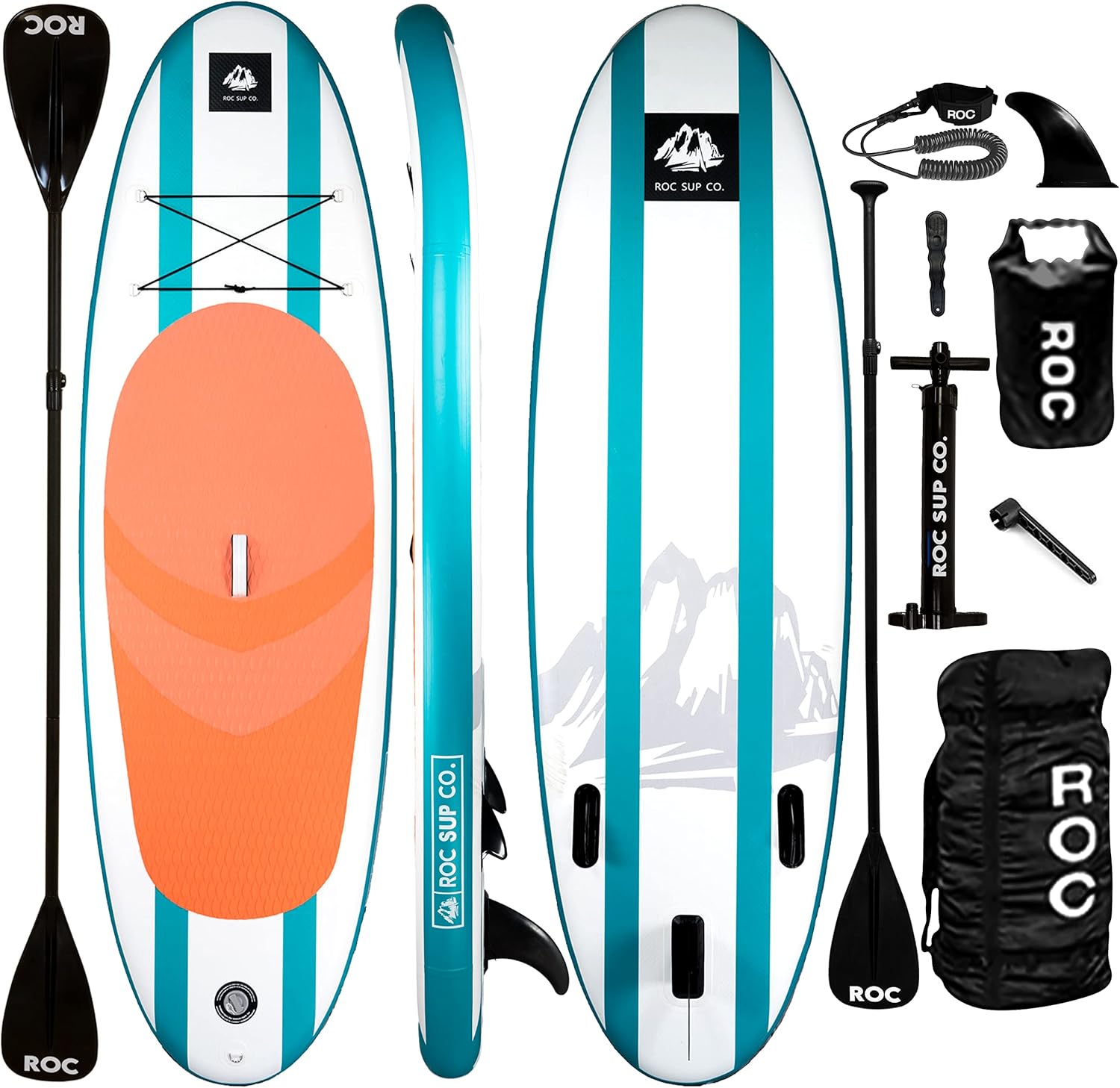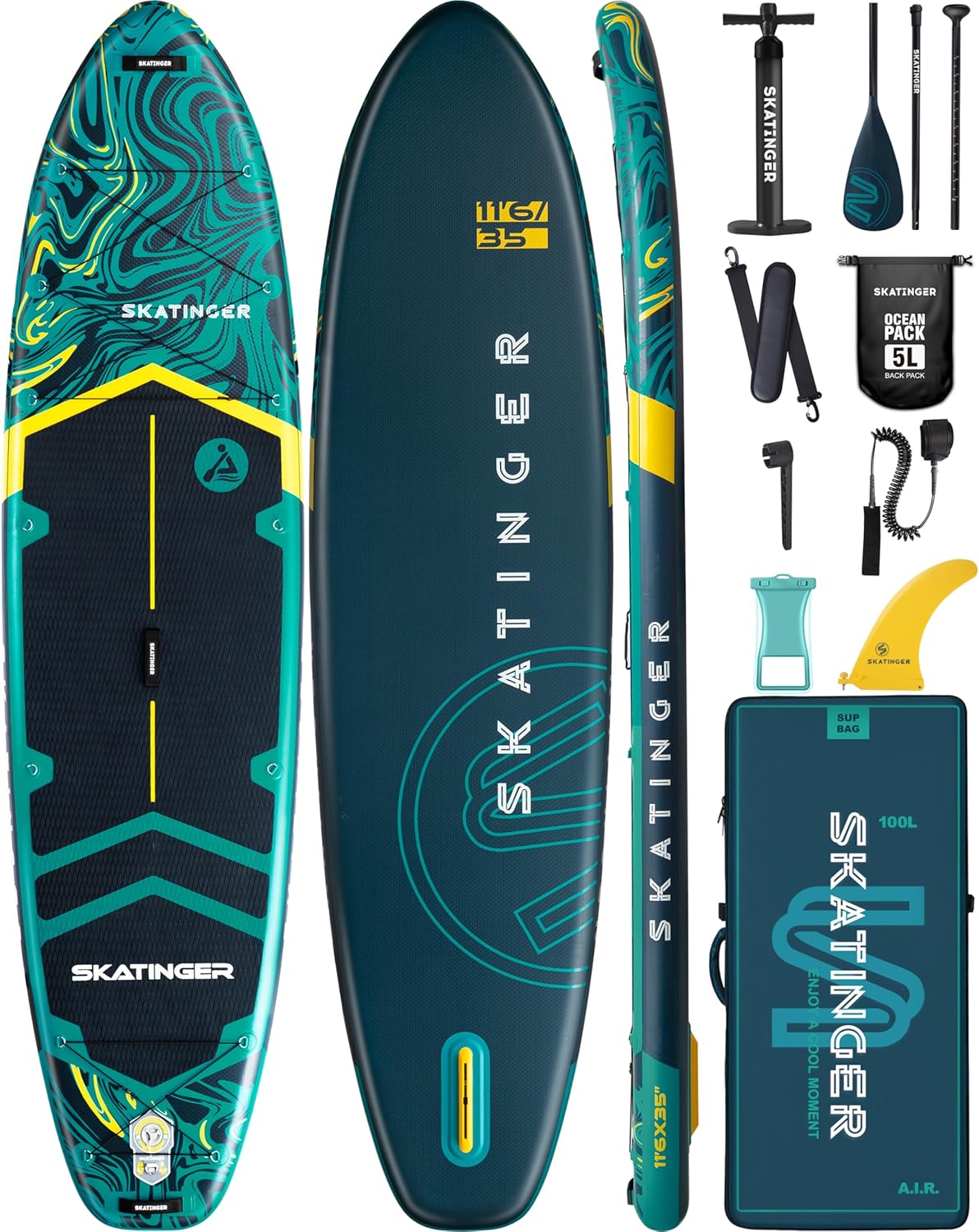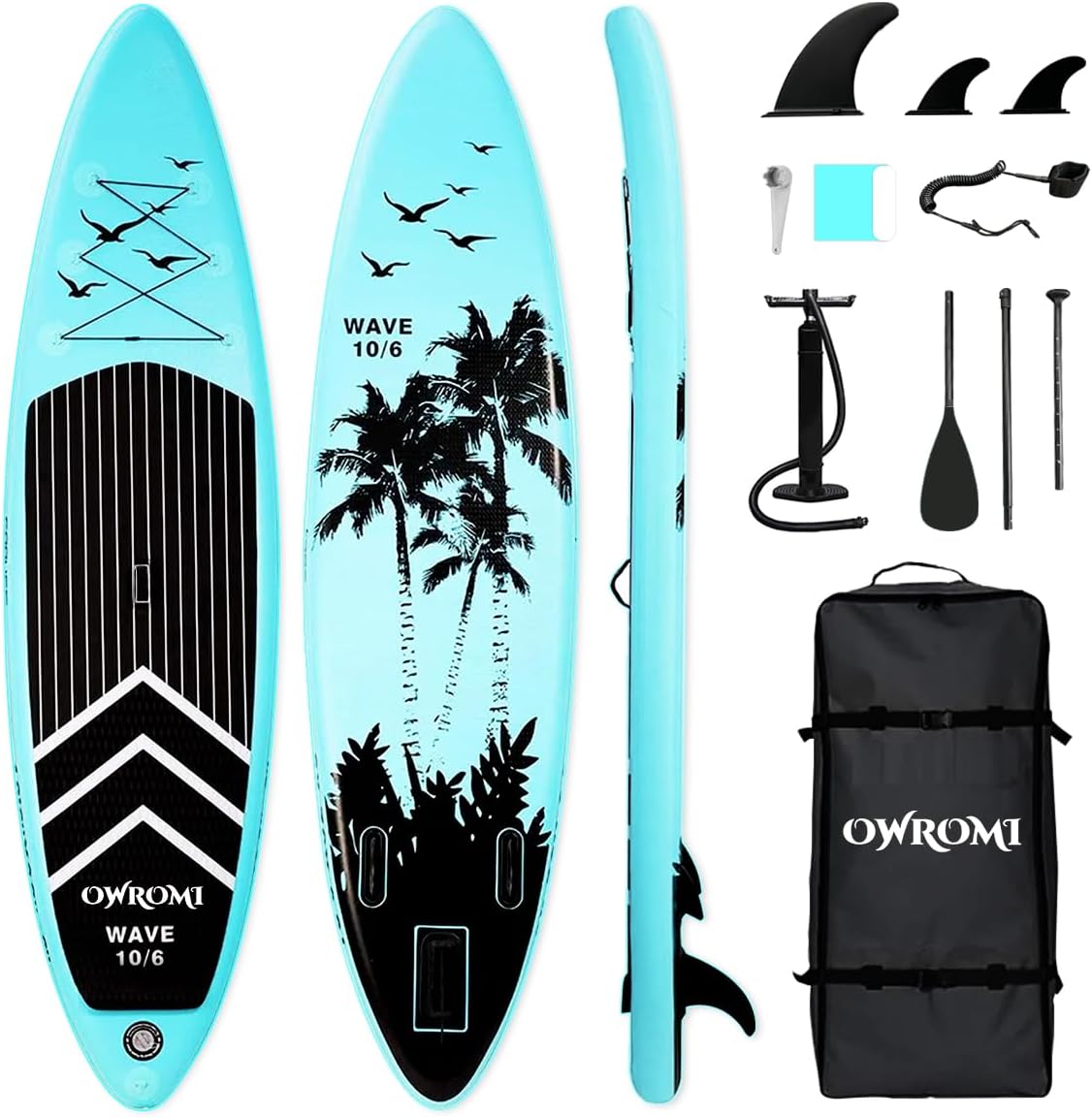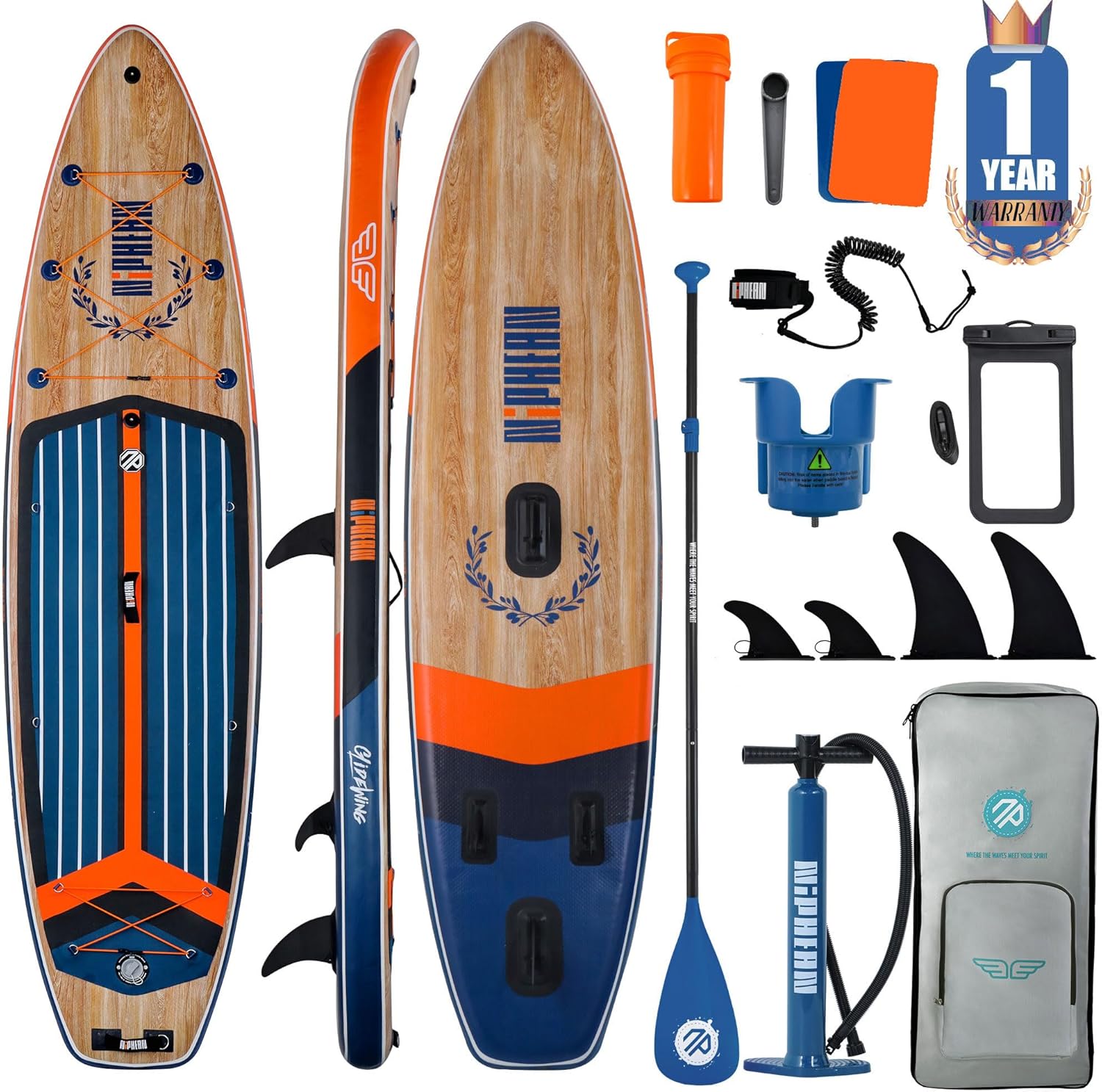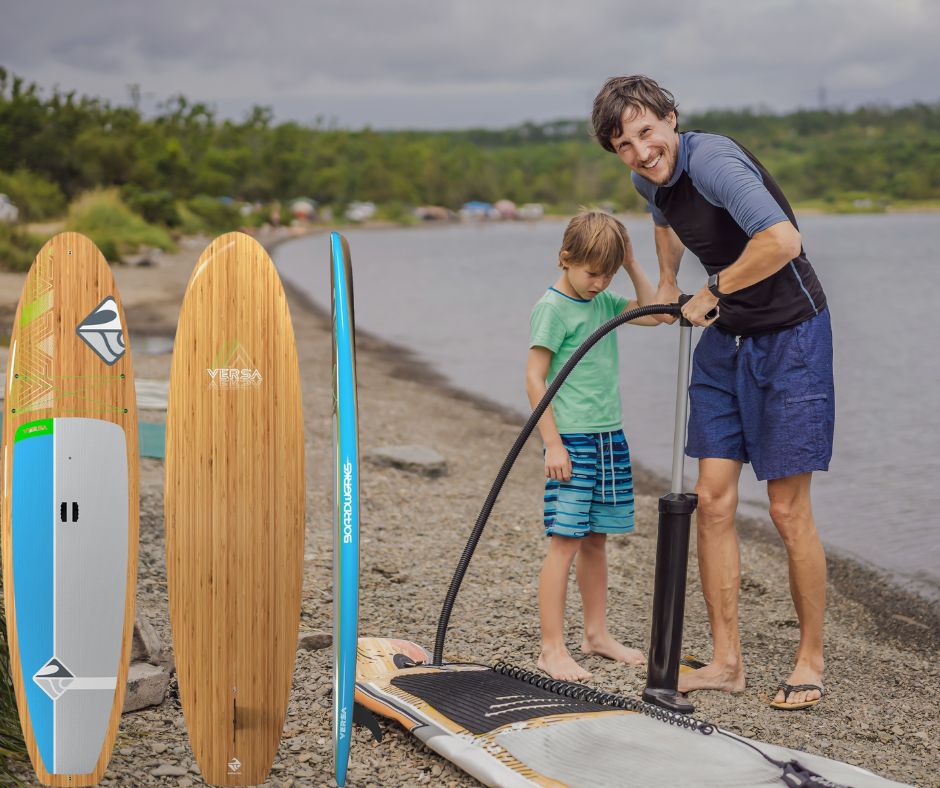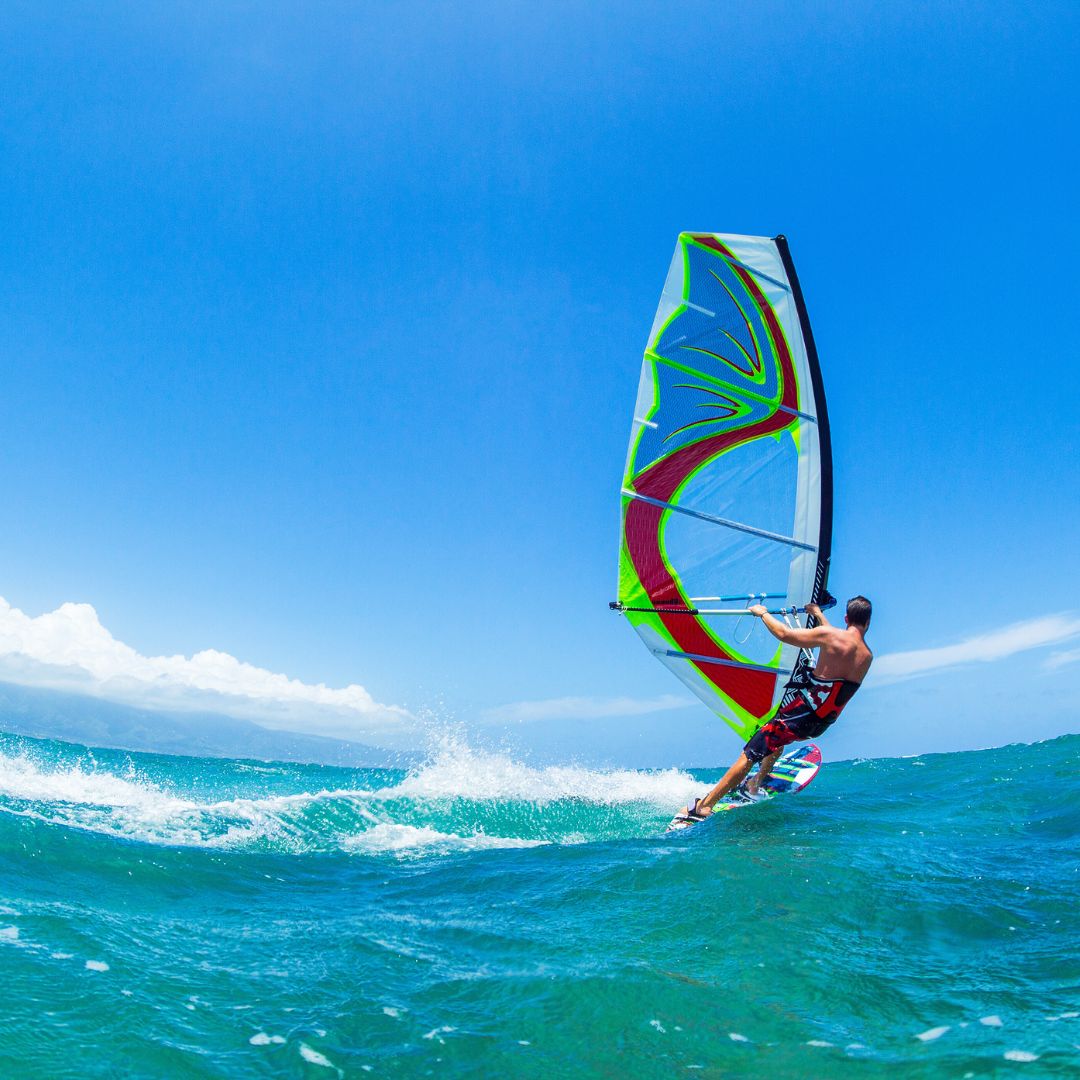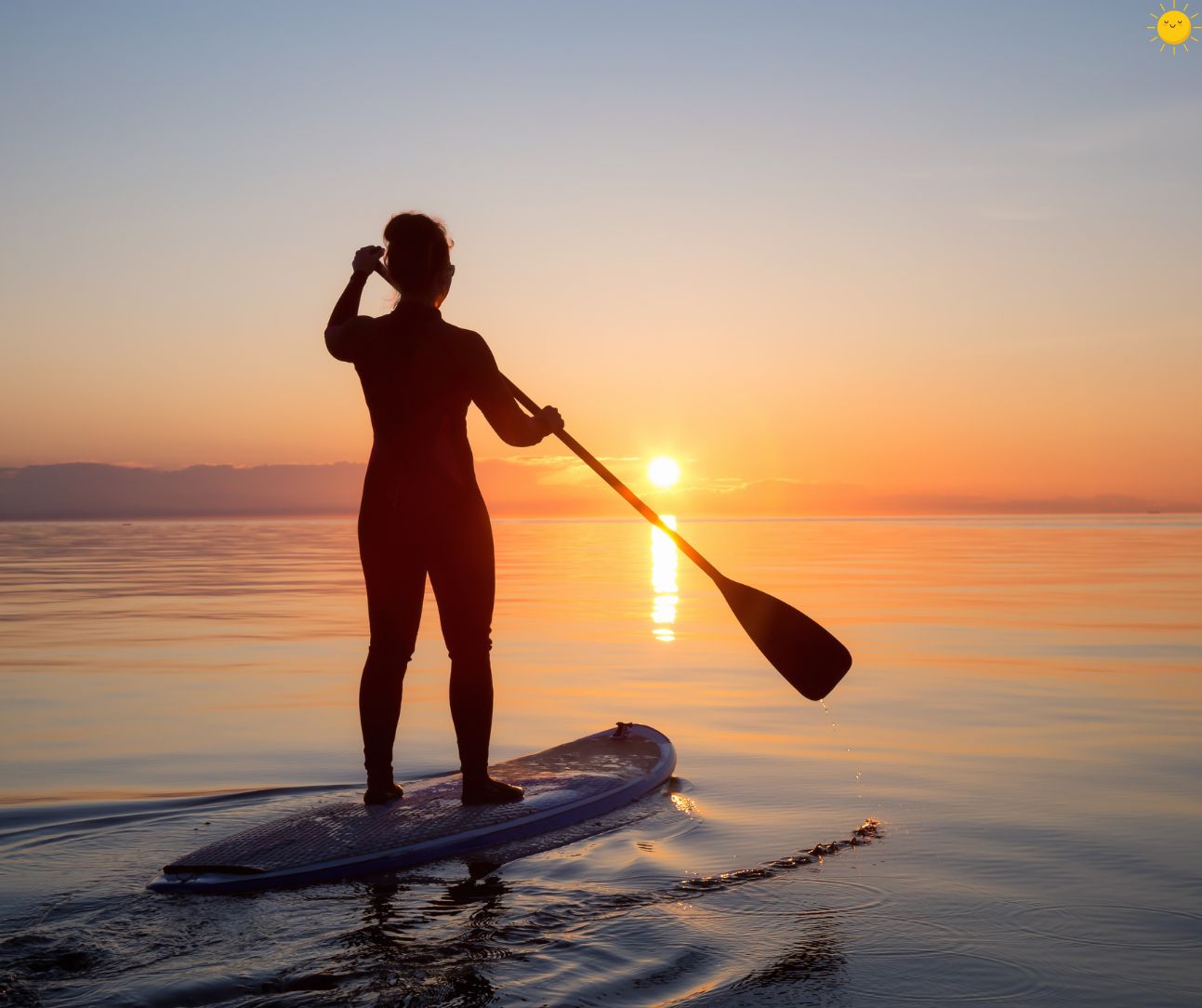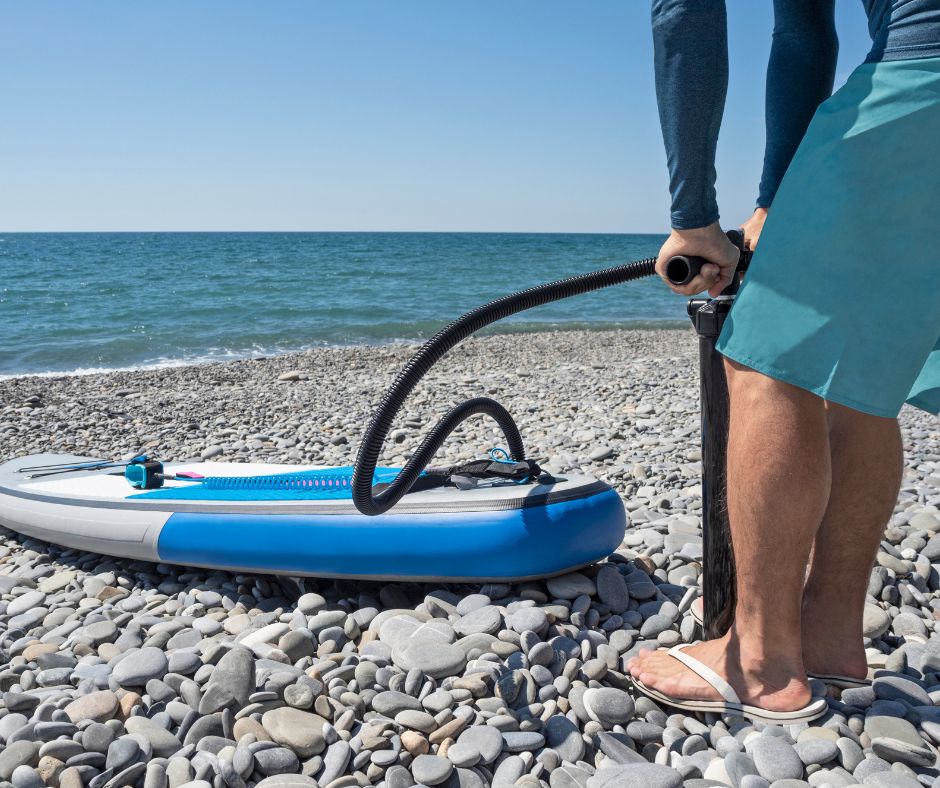Is Paddleboarding Hard? – is it Intimidating for Beginners?
Is paddleboarding hard? Well, if you’ve ever seen someone wobbling like a penguin on a unicycle, you might assume paddleboarding is a sport best left to gymnasts or adrenaline junkies. But here’s the truth: it’s not.
If anything, the hardest part about paddleboarding is deciding whether to wear sunglasses or a hat (spoiler: wear both). Think of it as nature’s version of yoga. You might look awkward at first, but eventually, you’ll strike a pose so perfect, even the ducks will nod in approval.
So, is paddleboarding hard? Not at all. And to prove it, let’s break it down step by step with tips.
Is Paddleboarding Hard?
Is paddleboarding hard? Short answer: no, paddleboarding isn’t hard. Long answer: it’s all about balance, technique, and embracing the occasional tumble into the water. Paddleboarding is widely considered one of the easiest and most beginner-friendly water sports.
Here’s why it’s easier than it looks:
|
|
|
|
- Stable Boards for Beginners: Today’s boards, especially the best hard SUP boards, are designed to give you the balance of a ballerina – minus the tutu.
- Start Small, Glide Big: Most people learn paddleboarding on calm, flat water, like lakes or bays. It’s not like surfing, where you’re dodging waves and seaweed.
- It’s All in the Technique: Once you understand the basics of how to stand up paddle board, you’ll feel like a pro gliding across the water.
Let’s face it: if standing and walking are in your skillset, paddleboarding will be, too. And if you’re thinking, “How hard is paddle boarding, really?” the answer is: not hard at all!
Why Do People Think Paddleboarding Is Hard?
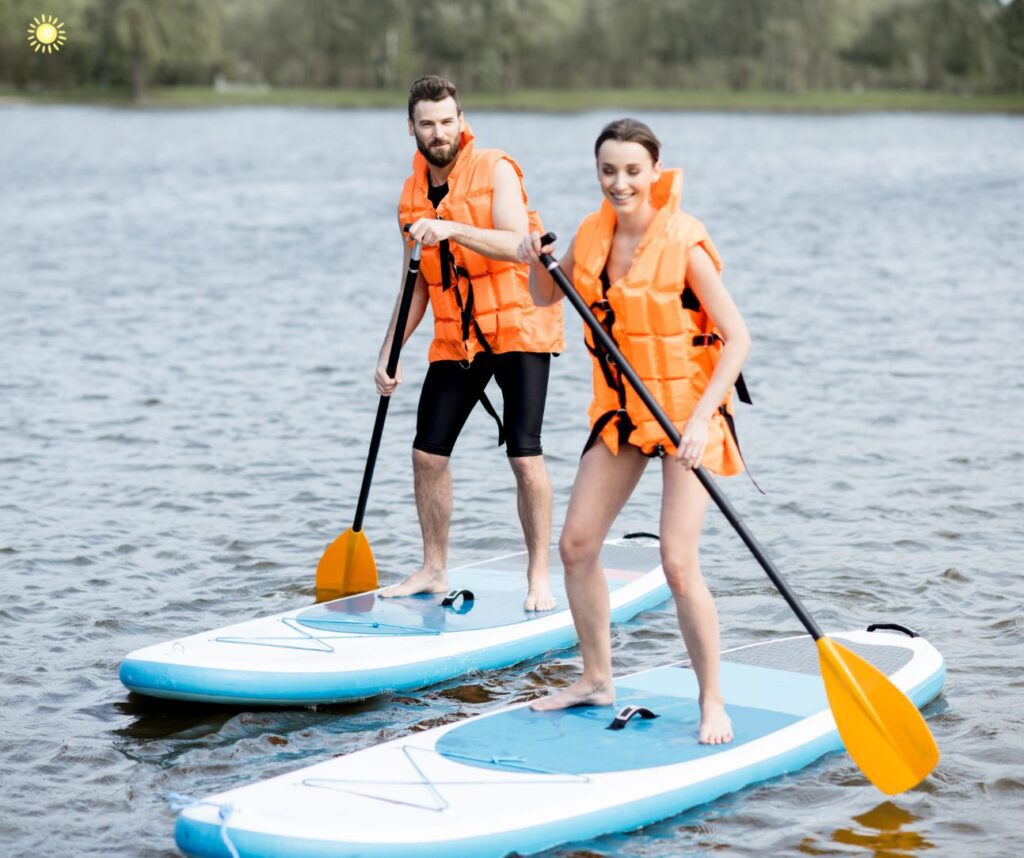
Before we convince you that paddleboarding is easy, let’s address some of the common reasons people hesitate to give it a try. Spoiler alert: it’s all in your head (and maybe your unsteady knees).
1. Fear of Falling Off
The number one worry for most beginners? Falling into the water. Newsflash: falling isn’t a failure – it’s part of the fun! Paddleboarding without a splash or two is like going to the beach and avoiding the sand.
- Reality Check: Paddleboards are designed to keep you stable. Unless you’re attempting backflips or racing dolphins, staying on your board is easier than you think.
- Pro Tip: Start kneeling on the board before attempting to stand up. Plus, kneeling makes you look extra zen.
Do you need a life jacket on a paddle board? Absolutely! Even if you’re confident in your swimming skills, wearing one ensures safety during those “graceful” falls.
2. Not Strong Enough
Some people worry they don’t have the strength for paddleboarding. But trust me, you don’t need Hulk-level muscles to paddle. If you can open a jar of pickles or swipe through TikTok for hours, you’ve got what it takes.
- Reality Check: Paddleboarding relies more on proper technique than brute strength.
- Pro Tip: Use your core to paddle, not just your arms. Think of it as a low-impact, full-body workout that doesn’t feel like exercise. Oh, and speaking of exercise, is paddleboarding a workout? You bet! It tones your core, legs, and arms – all while you’re having fun.
3. Balancing Looks Hard
Balancing might look tricky, but it’s not as complicated as walking a tightrope. Modern boards, especially those designed as the best hard SUP boards, are stable enough to support beginners, furry friends, and even the occasional picnic setup.
- Reality Check: Your board is wider than you think, giving you a stable base.
- Pro Tip: Keep your eyes on the horizon, not your feet. Unless, of course, you’re admiring your pedicure.
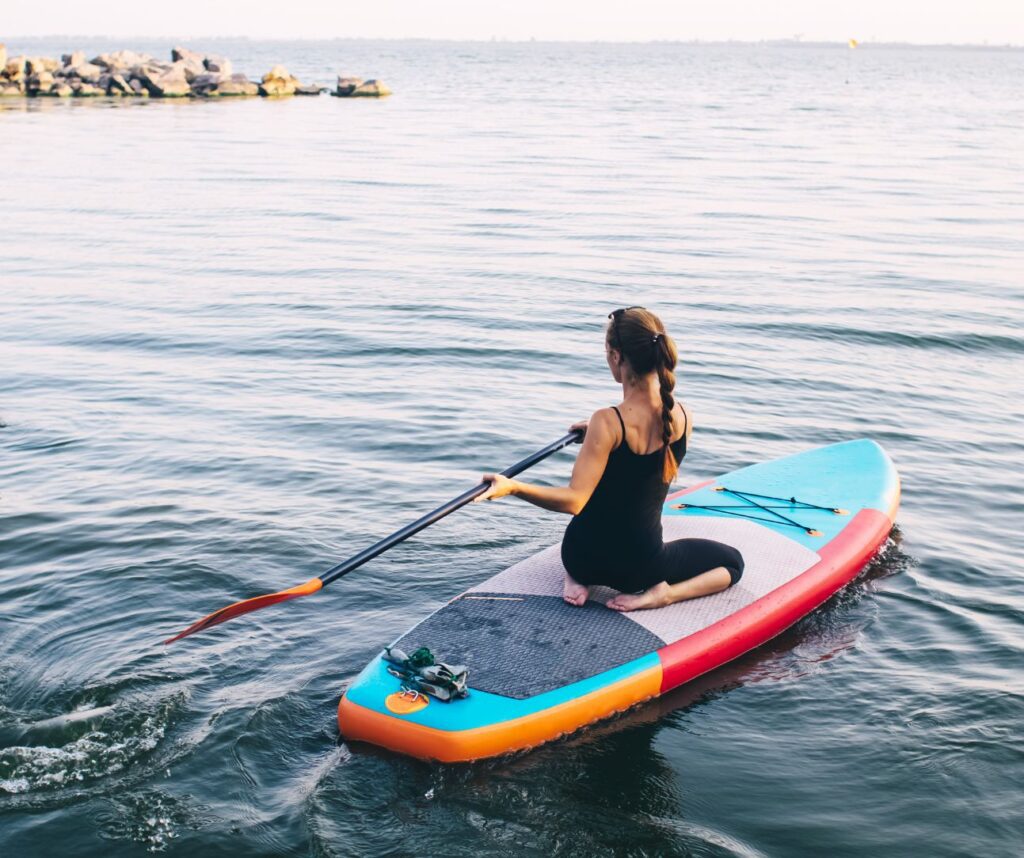
How to Stand Up Paddle Board Like a Pro
Before you start imagining yourself gliding like a swan, you need to learn the basics of how to stand up paddle board. Don’t worry – it’s easier than riding a bike.
- Start Kneeling: Begin by kneeling in the center of the board to get a feel for its stability.
- Stand Slowly: Place your hands on the board for balance and bring one foot up at a time.
- Find Your Stance: Keep your feet shoulder-width apart and bend your knees slightly for better balance.
- Paddle with Confidence: Use short, controlled strokes. Remember, this isn’t a race – it’s more like a leisurely stroll on water.
Pro Tip: If you fall in, laugh it off. The water’s there to catch you, not judge you.
RELATED: Can Two People Fit On A Paddle Board
Is Paddleboarding a Workout?
If you’ve been wondering, “Is paddleboarding a workout?” the answer is a resounding yes. But here’s the catch – it’s one of those workouts that doesn’t feel like a workout. You’re not stuck in a gym or running on a treadmill; instead, you’re out in nature, soaking up the sun and paddling along the water.
Here’s how paddleboarding works your body:
1. Core Strength
Balancing on the board requires you to engage your core muscles. Even if you’re just standing still, your abs are working hard to keep you stable. Who needs sit-ups when you’ve got a paddleboard?
2. Upper Body Power
Paddling uses your arms, shoulders, and back muscles. Every stroke feels like a mini strength-training session – without the dumbbells.
3. Legs and Balance:
Keeping your balance activates your leg muscles, particularly your quads and calves. If you’re on a hard paddle board, the rigid surface makes the workout even more effective.
So, is paddleboarding a workout? Absolutely, and it’s one you’ll actually enjoy. It’s perfect for those who want to tone their body while feeling like they’re on vacation.
And the best part? It’s a workout you can enjoy with zero gym memberships or grumpy trainers.
Is Paddleboarding Hard for Beginners?
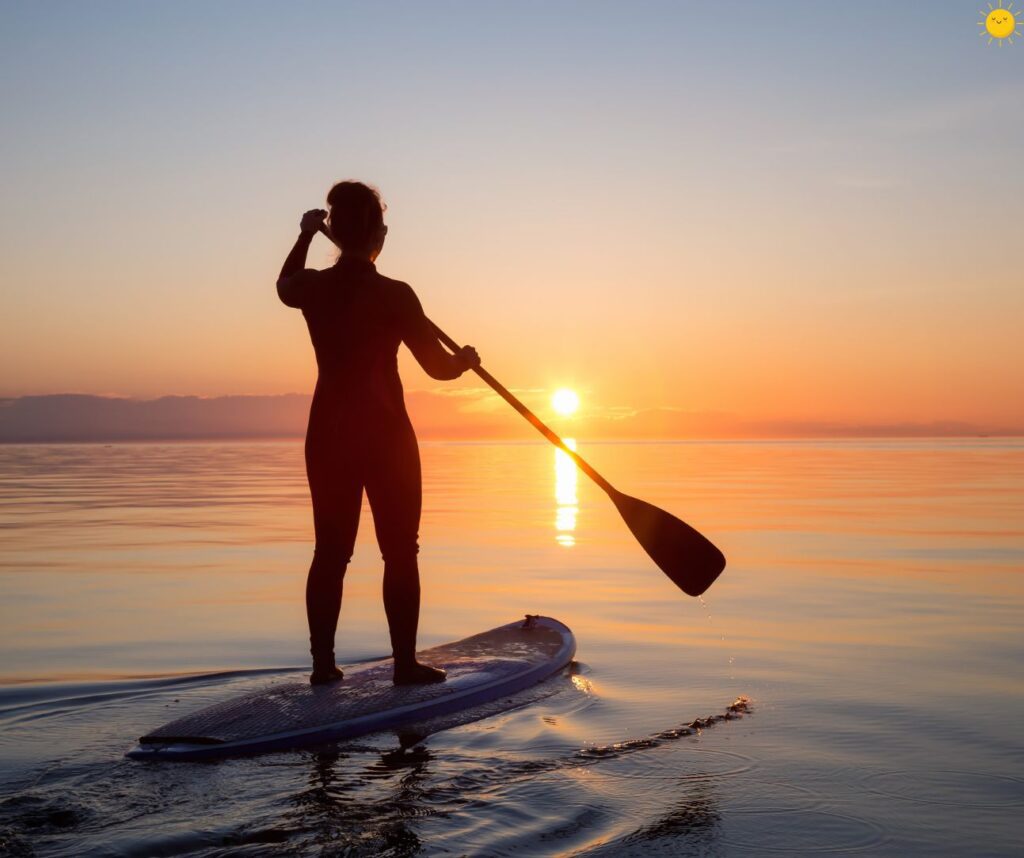
Let’s set the record straight: paddleboarding for beginners is not as intimidating as it seems. The image of you wobbly and tumbling into the water might haunt your imagination, but the reality is far more forgiving.
Most beginners find that the hardest part of paddleboarding is psyching themselves out before stepping onto the board. If you are afraid of falling in the water, make sure you put on your lifejacket.
When you’re a beginner, you’re likely wondering, “Is paddleboarding hard for beginners?” Well, if you can stand up from your couch without tripping over the coffee table, you’ve got what it takes. Paddleboards, especially the ones designed for newbies, are stable and forgiving.
These boards are like the training wheels of the paddleboarding world – wide, steady, and ready to keep you afloat even if you’re less than graceful.
Here’s why it’s not as hard as you think:
- Calm Waters Are Your Best Friend: Beginners don’t start on raging rivers. You’ll likely begin on calm lakes or bays where the water is as still as a yoga studio.
- Modern Boards Are Built for Stability: If you’re using an inflatable paddle board, you’ll find that it’s designed for balance, making it easier for beginners to stay upright.
- Technique Over Strength: Paddleboarding isn’t about muscle power; it’s about learning a few simple moves.
So, is paddleboarding hard for beginners? Not really. The biggest hurdle is your own doubt. Once you get over that, you’ll be gliding along the water like you’ve been doing it for years. And yes, falling in is part of the fun – you might even find it refreshing!
READ ALSO: Are Retrospec Paddle Boards Good
Is Paddle Boarding Harder Than Kayaking?
The classic debate: is paddle boarding harder than kayaking? The answer depends on what you’re looking for. Kayaking feels like riding a bike with training wheels, while paddleboarding is like learning to ride a scooter – on water.
Let’s break it down:
- Balance vs. Sitting:
Kayaking is a seated activity, which means balance is not a big concern. You’re in a cozy little cockpit, paddling away like you’re steering a bumper car. Paddleboarding, on the other hand, requires you to stand, which can feel tricky at first but gets easier as you build confidence. - Core Engagement:
If you’re looking for a core workout, paddleboarding wins. Standing up engages your abs, back, and legs, while kayaking primarily works your upper body. In short, if you’re asking, “Is paddleboarding a workout?” it absolutely is, and a full-body one at that. - Learning Curve:
Paddleboarding has a slightly steeper learning curve because of the balance factor. That said, most beginners master the basics after a few tries, so don’t let that deter you.
So, is paddle boarding harder than kayaking? Yes and no. It’s harder in terms of balance but easier when it comes to exploring shallow areas where kayaks might struggle. Plus, standing up gives you a better view of the water – you might even spot some fish swimming underneath you!
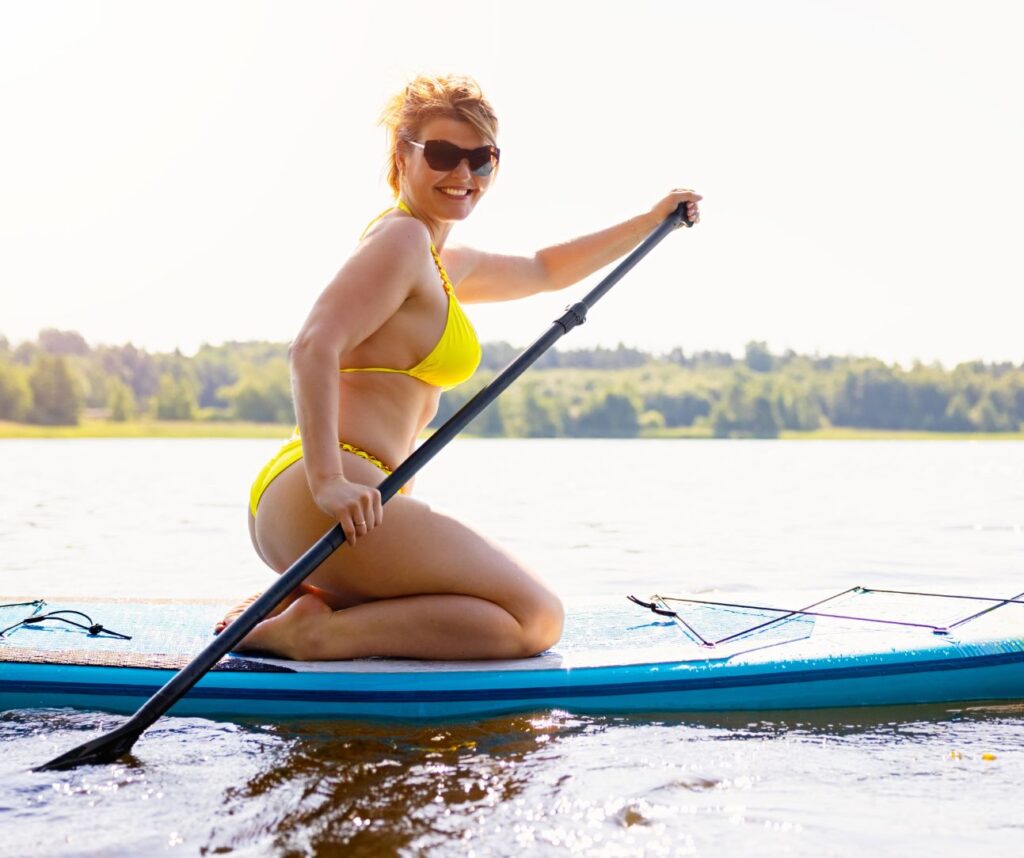
Things I Wish I Knew When I Started Stand Up Paddle Boarding
Here are the top things I wish someone had told me when I first started paddleboarding:
- Start on Calm Water:
I learned the hard way that starting on choppy water is a recipe for disaster. Calm lakes or bays are the ideal spots for beginners to practice. - Don’t Skip the Leash:
Your leash is like your paddleboarding buddy – it keeps your board close if you fall off. Trust me, swimming after a drifting board is not the kind of cardio you want. - Practice Paddling on Your Knees First:
Learning to paddle while kneeling makes it much easier to find your balance before standing up. Once I got the hang of kneeling, standing felt much less intimidating.
Looking back, I also wish I had started with a sturdy inflatable paddle board instead of a narrow racing board. Stability matters more than speed when you’re learning!
Is Paddleboarding Fun?
Absolutely. There’s something magical about gliding over the water, feeling the sun on your face, and enjoying the peaceful rhythm of your paddle strokes. If you’ve ever wondered, “Is paddleboarding fun?” let me assure you – it’s one of the most enjoyable outdoor activities out there.
Why is it so fun?
- It’s Versatile:
You can paddle for fitness, explore new waterways, or even do yoga on your board. Paddleboarding is what you make of it. - It’s Social:
Bring your friends, family, or even your dog along. Paddleboarding is a great way to bond and share laughs – especially when someone falls in! - It’s Relaxing:
There’s nothing quite like floating in the middle of a calm lake, with nothing but the sound of your paddle slicing through the water. It’s pure bliss.
So, is paddleboarding fun? Yes, and it’s the kind of fun that keeps you coming back for more.
Inflatable Paddle Board vs. Hard Paddle Board
When it comes to choosing between an inflatable paddle board and a hard paddle board, the decision depends on your priorities. Let’s compare the two:
Inflatable Paddle Board
- Lightweight and portable.
- Easy to store and transport.
- Soft surface, making it more beginner-friendly.
Hard Paddle Board
- Rigid, offering better performance for advanced paddlers.
- Durable and stable, especially in choppier waters.
- Ideal for racing or surfing.
Both options have their perks, but beginners often prefer an inflatable board for its ease of use and forgiving surface. Experienced paddlers, on the other hand, might lean toward a hard paddle board for its speed and precision.
What About Inflatable Kayaks?
If you’re on the fence about paddleboarding, consider an inflatable kayak as a beginner-friendly alternative. These are perfect for people who aren’t ready to stand up but still want to explore the water.
Inflatable kayaks are lightweight, portable, and incredibly stable – ideal for families or anyone who wants a relaxed experience.
Mistakes to Avoid as a Paddleboarding Beginner
Even with the easiest sports, mistakes happen. Here are some common paddleboarding blunders and how to dodge them:
1. Rushing to Stand Up
The faster you try to stand, the quicker you’ll fall.
Solution: Take your time. There’s no rush – stand when you’re ready.
2. Using the Wrong Board
Choosing the wrong paddleboard is like trying to dance in shoes two sizes too small. So, it is important to know how to choose a stand up paddle board.
Solution: Beginners should opt for wider boards, like the best hard SUP or an inflatable option.
3. Ignoring Safety Gear
Skipping the leash or life jacket? Bad idea.
Solution: Always ask yourself, “Do you need a life jacket on a paddle board?” The answer is a firm yes.
The Bottom Line on Is Paddleboarding Hard?
So, is paddle boarding hard? It’s not hard at all. Sure, it takes a little practice, but once you get the hang of it, you’ll be paddling with confidence – and maybe even showing off a bit. Whether you’re using a stand up board paddle or trying out an inflatable kayak, the experience is as fun as it is rewarding.
In the end, the only hard thing about paddleboarding is deciding where to go next. So, grab your board, get out there, and make some waves (or at least paddle through them with style)!
